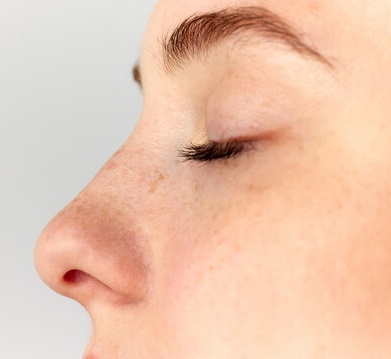Rhinoplasty, commonly known as a nose job, is one of the most sought-after cosmetic procedures worldwide, including in Pakistan’s capital city. With advancements in surgical techniques, more people are now opting for Rhinoplasty in Islamabad to enhance facial harmony, improve nasal function, or correct congenital or post-traumatic issues. While the cosmetic and functional benefits are clear, many prospective patients share a common concern: pain management and comfort throughout the journey.
This comprehensive guide explores what to expect in terms of pain, recovery, and comfort after rhinoplasty, along with practical strategies and medical approaches to ensure a smooth healing process.
Understanding Rhinoplasty: More Than Just A Cosmetic Procedure
Rhinoplasty is not only about aesthetics. For some, it is about reshaping the nose to improve confidence, while for others, it resolves breathing difficulties caused by structural issues. The procedure can involve:
-
Reduction or augmentation of nasal structures.
-
Correction of the nasal septum (septoplasty) for better airflow.
-
Reshaping the nasal tip for a refined appearance.
-
Revision surgery to correct the results from a previous procedure.
Despite its benefits, it is still surgery, and patients should prepare for postoperative pain, swelling, and bruising. However, with modern medical care, pain is far less severe than many imagine.
Is Rhinoplasty Painful? Setting Realistic Expectations
The most common question patients ask is: “Will it hurt?”
Contrary to popular belief, most people report discomfort rather than severe pain after rhinoplasty. The procedure is performed under general or local anesthesia with sedation, ensuring patients do not feel pain during surgery. Postoperatively, the sensations patients experience usually include:
-
Nasal congestion due to swelling.
-
Mild to moderate soreness around the nose and face.
-
Bruising and tenderness near the eyes.
-
Headache or pressure-like sensations from swelling.
Severe pain is rare, and modern pain management techniques keep discomfort well under control.
Immediate Post-Surgery Phase: The First 48 Hours
The first two days after surgery are usually the most challenging. Patients often feel pressure and congestion because of nasal swelling and internal packing (if used). During this period:
-
Cold compresses can reduce swelling and discomfort.
-
Prescribed pain medications help manage soreness.
-
Sleeping with the head elevated eases breathing and minimizes swelling.
Most patients describe the discomfort as similar to having a severe cold or sinus infection rather than unbearable pain.
Pain Management Strategies After Rhinoplasty
Managing pain effectively involves a combination of medications, lifestyle adjustments, and self-care techniques.
1. Medications Prescribed by Surgeons
-
Pain relievers (analgesics): Usually, doctors prescribe acetaminophen or similar painkillers. Stronger medications are only needed for a short time.
-
Antibiotics: To prevent infection that could increase discomfort.
-
Steroids (sometimes): To minimize swelling and speed up recovery.
2. At-Home Comfort Measures
-
Cold packs around the eyes and cheeks help reduce swelling and bruising.
-
Hydration and light meals aid healing and prevent nausea from medications.
-
Humidifiers keep airways moist, reducing dryness and irritation.
3. Sleeping Adjustments
-
Keeping the head elevated with two pillows reduces swelling and discomfort.
-
Avoid sleeping on your side or stomach, as this can put pressure on the nose.
4. Avoiding Pain Triggers
-
Do not blow your nose during the initial healing period.
-
Avoid wearing glasses that rest on the nose.
-
Stay away from strenuous activities that increase blood flow and pressure.
The Role of Anesthesia in Comfort
One major reason rhinoplasty is not painful during surgery is anesthesia. Depending on the procedure, surgeons may use:
-
General anesthesia: The patient is fully asleep and feels nothing.
-
Local anesthesia with sedation: The nose is numbed, and the patient is relaxed but conscious.
Both methods ensure comfort during surgery, with postoperative pain being manageable through prescribed medications.
Recovery Timeline and Pain Levels
Every patient’s recovery journey is unique, but here is a general timeline of what to expect:
-
Days 1–3: Moderate swelling, congestion, and pressure. Pain medications keep discomfort manageable.
-
Days 4–7: Bruising peaks, but pain continues to decrease. Patients often report feeling more congested than in pain.
-
1–2 Weeks: Most external swelling and bruising resolve. Pain is minimal or gone.
-
1 Month: Breathing improves, and the nose feels less tender.
-
3–6 Months: Subtle swelling decreases, and the nose feels normal again.
-
1 Year: Final results are visible, with no residual pain.
Comfort Beyond Pain: Emotional and Psychological Aspects
Comfort during recovery is not only physical but also emotional. Many patients feel anxious about their appearance during the healing phase. Understanding that bruising and swelling are temporary helps manage expectations. Support from family, friends, and professional counseling can also contribute to psychological comfort during recovery.
Tips for a Comfortable Recovery at Home
-
Prepare a recovery space with pillows, entertainment, and easy access to essentials.
-
Stock up on soft foods that are easy to chew without straining facial muscles.
-
Follow all post-operative instructions carefully to prevent complications.
-
Attend follow-up appointments to ensure everything is healing properly.
-
Stay patient – healing takes time, and comfort increases each day.
Common Concerns and Their Solutions
-
“What if I feel too much pain?”
Contact your surgeon immediately. Pain beyond mild to moderate levels could indicate complications. -
“When can I go back to work?”
Most patients return within 7–10 days, depending on their comfort and job type. -
“Will I need revision surgery?”
Only a small percentage require revisions, usually due to aesthetic concerns rather than pain.
Importance of Choosing the Right Surgeon in Islamabad
Your comfort during and after rhinoplasty greatly depends on your surgeon’s expertise. A skilled surgeon minimizes tissue trauma, which directly reduces swelling, bruising, and discomfort. When choosing a clinic in Islamabad, consider:
-
Board certification and credentials.
-
Experience with both cosmetic and functional rhinoplasty.
-
Patient testimonials and before/after photos.
-
Emphasis on patient care and pain management.
Conclusion
Rhinoplasty is a transformative journey that not only enhances physical appearance but can also improve breathing and self-confidence. While mild discomfort is a normal part of recovery, modern techniques and effective pain management make the process far more comfortable than many expect. With proper care, most patients describe the recovery as manageable and well worth the results.
For those considering the procedure, it is essential to choose an experienced surgeon and a trusted facility to ensure both safety and comfort throughout the process. If you are planning to undergo Rhinoplasty in Islamabad, selecting a reputable clinic is the key to a smooth experience. One such trusted name is SKN Cosmetic Clinic, where expert surgeons and a patient-focused approach guarantee excellent results with maximum comfort.



